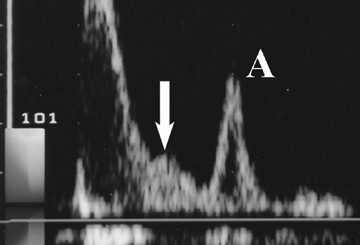Nephrology MCQs-8
Contents
- 1 Normally there are about ——- calyces per kidney
- 2 Most common cause of polyuria from nephrogenic Diabetes insipidus in adults
- 3 Hypotonic urine is typically defined as an osmolality of
- 4 If the urine osmolality is >800 mOsm/Kg that rules out any Diabetes insipidus
- 5 Gestational DI occurs due to the degradation of AVP by the enzyme
- 6 Gestational DI typically presents in the
- 7 C-terminal peptide of pro-vasopressin
- 8 Copeptin is synthesized mainly in
- 9 Compound calyx
- 10 Medial bowing of the ureter
- 11 Most common causes of Nephrogenic Diabetes Insipidus
- 12 Most common cause of Central diabetes insipidus (CDI)
- 13 Receptors for ADH
- 14 Polyuria
- 15 Measurement of plasma copeptin:
- 16 Copeptin
Normally there are about ——- calyces per kidney
A. 10 to 12
B. 16 to 20
C. 25 to 30
D. 35 to 45
Most common cause of polyuria from nephrogenic Diabetes insipidus in adults
A. Chronic lithium ingestion,
B. Hypercalcemia
C. Hypokalemia
D. Hyponatremia
Hypotonic urine is typically defined as an osmolality of
A. <100 mOsm/Kg
B. <200 mOsm/Kg
C. <300 mOsm/Kg
D. <400 mOsm/Kg
If the urine osmolality is >800 mOsm/Kg that rules out any Diabetes insipidus
A. > 300 mOsm/Kg
B. > 800 mOsm/Kg
C. < 300 mOsm/Kg
D. < 800 mOsm/Kg
Gestational DI occurs due to the degradation of AVP by the enzyme
A. Acetylcholine esterase
B. Cysteine aminopeptidase
C. Phosphorylase
D. Serine hydrolase
Gestational DI typically presents in the
A. First trimester
B. Second trimester
C. Third trimester
D. Post partum period
C-terminal peptide of pro-vasopressin
A. Atamestane
B. Salicin
C. Copeptin
D. Leptin
Copeptin is synthesized mainly in
A. Anterior Pituitary
B. Posterior Pituitary
C. Mammillary bodies
D. Hypothalamus
Compound calyx
When more than one calyx drains into an infundibulum, it is known as a compound calyx, most frequently seen in the poles.
Medial bowing of the ureter
Medial bowing or displacement of the ureter is often abnormal and can be seen secondary to ureter displacement from retroperitoneal masses, lymphadenopathy, and retroperitoneal fibrosis.
Most common causes of Nephrogenic Diabetes Insipidus
- hereditary nephrogenic DI in children,
- chronic lithium ingestion, and hypercalcemia in adults.
Most common cause of Central diabetes insipidus (CDI)
Idiopathic diabetes insipidus
Receptors for ADH
There are two different receptors for ADH: the V1 (AVPR1) and V2 (AVPR2) receptors. The AVPR2 gene is located on the X chromosome (Xq-28).
Polyuria
Polyuria is defined as the excretion of a urinary volume >150 ml/Kg/24 hours at birth, >100-110 ml/Kg/24 hours up to the age of 2 years, and >50 ml/Kg/24 hours in older children or adults
Measurement of plasma copeptin:
Copeptin
Copeptin (carboxy-terminal-Pro-vasopressin) is the C-terminal peptide of pro-vasopressin co-secreted with AVP from the posterior pituitary.[
Unlike plasma AVP measurement, copeptin measurement in the plasma is relatively less cumbersome.
Copeptin measurement several advantages: copeptin can remain stable for days after blood sampling and can be measured relatively quickly.
Copeptin is a 39-amino acid-long, glycosylated peptide.
Copeptin is synthesized mainly in the paraventricular neurons of the hypothalamus and in the supraoptic nucleus.





